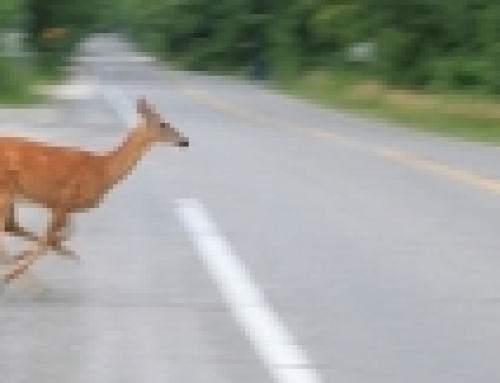
So it looks like Rain
by Storm (Gary Brandt)
Over the years legend has it that a Top Cats ride with me as the Road Captain, was an invitation to ride in the rain. It’s a tough reputation to overcome since there have been some infamous rides that storms played a major role. There was the Tornado One, also known as the Hoosier Run. How about the Tornado Two? Also known as the Little Sturgis Run. The Door County ride several years ago included heavy fog and a nice downpour on the way home. Of course a little rain has fallen on many other rides as well.
Every Top Cat has an interesting choice to make. You can sit at home and only ride when you know the sun will always shine or you can learn to deal with the extra demands of riding in wet weather and enjoy many more miles on the road. In this area, rain and storms are normal and most of the time you will not end up with all day rains. On longer rides, we can seldom predict what will happen over the course of many days. You just have to be prepared to deal with it.
It is amazing sometimes to see how many riders do not always carry rain gear. Of all the safety precautions we can take, having the proper gear is right at the top. Aside from cycles of drought, in Northern Illinois it’s a safe bet there is always a slight chance of a pop up storm in the afternoons. Rain gear including goggles of some type will enable you to keep riding. Here are some other wet riding tips that were assembled from several internet sources.
Painted Lines – Crosswalks can be unsafe for motorcyclists, particularly if you’re turning right or left and crossing the lines at an angle. Slow down more than usual and make the turn straight up, rather than in a lean. A few years ago up in Wisconsin Rapids we encountered a “roundabout”. The painted lines were 2 feet deep and the traction was minimal. A few of us started to slide, but thankfully no one fell. (Oops I forgot about the rainy Wisconsin Dells Ride).
The same can be said about the diamonds in other states’ HOV lanes. These can be dangerous when you lean into one, especially on the freeway. The diamond is shaped so you just slide across it and continue to slide along it.
Any painted line is a hazard. Until the DOT addresses the issue and comes up with a tackier texture you’re the one in control of your destiny.
Surface Textures – Many commercial and residential parking areas are paved with very slick concrete surfaces. Your wet entry into the local mall or condo complex can put you on the ground in a second. Again, ride slow and straight up and don’t let the concrete bite you. This one we don’t encounter too often but it’s a good idea to keep it in mind.
How about that rubber they use around railroad tracks to decrease the sound as cars drive over them? Forget those little circles on the surface, these provide zero traction to you as you cross. Ride slow and straight up. When you add in the extra bump we can expect from our lousy roads here in the Chicago area, extra caution is always needed.
Steel – Manhole covers and railroad tracks themselves are also a hazard. Making a turn over the surface of them sets you up for trouble. Avoid such, or keep the bike straight up and cross over it slowly.
Railroad tracks have a way of popping up on you just after a turn and you may still be into a lean when you reach them. Look for the crossing signs ahead of time, slow down and stay straight up when crossing.
Grated bridge crossings and metal plates are a nasty encounter in the rain. Look at where you want to ride, take it slow and don’t try any fancy dancing, particularly a lane change. I think it was another Road Captain’s ride one year where we crossed a grated bridge several times as we rode in circles. It wasn’t raining, but it could’ve been.
Water – Puddles/Pot Holes – You cruise through a puddle and after it’s too late you realize you just went into a pot hole. There was an ex Top Cat who lost control and sustained serious injuries along with totaling his bike. Avoid puddles if you can. Use caution and predict the possibility ahead of time.
Oil – It’s everywhere and very illusive. Those little red and blue rainbows on the ground mean danger. Ride slow and straight up. If you’re caught in the first rain following a few dry days remember the roads are covered with lots of oil and dirt that will be lifted from the surface in the first 30-60 minutes of a new rain. Take a short break if you can. Look for discoloration on the pavement as it may be a sign of a spill. Recently a several mile path of driveway sealer was on a road up north. There was a truck with its valve open just driving along oblivious to the death stream he was dropping on the road.
Lightning: There are many falsehoods about lightning and its danger to motorcycles. Let’s clear up a few of them.
- While rubber is one of the best insulators, your tires do nothing to protect you. The high voltages and currents will go right through them. Remember that Air is also a great insulator and the lightning goes through it without any trouble.
- You are safer in a car, not because of the tires, but due to the metal cage that surrounds you.
- Lightning is not attracted to metal, although metal is a great conductor, its attracted to tall objects.
- Lightning is lightning. There is an old wives tale that distant flashes are something called “heat lightning”. This is actually normal lightning at a great distance. You are too far away to hear the thunder or see the actual bolt. It’s a sign however that a storm may be coming your way.
So how close is too close? The National Weather service recommends that you use the 5 second rule. For every 5 seconds you count between seeing the lightning and hearing thunder the strike is one mile away. As always we must use our best judgment and do what we feel is right for us.





